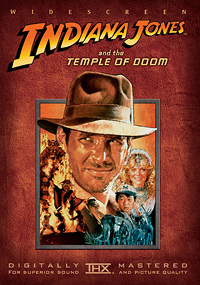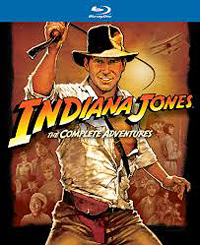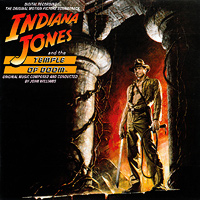THE INTERVIEW
Scott Higgins is Associate Professor of Film Studies at Wesleyan University, where he teaches a course on The Action Film. He wrote a book about the history of Technicolor called Harnessing the Technicolor Rainbow: Color Design in the 1930s, edited a book about the work of early film theorist Rudolf Arnheim (Arnheim for Film and Media Studies), and is finishing a book on the sound-era serial entitled Matinee Melodrama.
Eric Lichtenfeld is the author of the book Action Speaks Louder: Violence, Spectacle, and the American Action Movie, an authoritative and entertaining study of the action film genre. In addition, he has written about film, interviewed filmmakers, and moderated panel discussions for the Academy of Motion Picture Arts and Sciences (including a 2011 screening of Raiders of the Lost Ark), the American Cinematheque, Slate, The Hollywood Reporter, and more. He has taught film to students at Loyola Marymount University, UCLA, Wesleyan University, and the Harvard School of Law. He is also a communications and film industry professional whose specialties include motion picture advertising, speechwriting, and others. Eric has also contributed supplemental material for several DVD and Blu-ray releases, including Speed, Predator, and Die Hard.
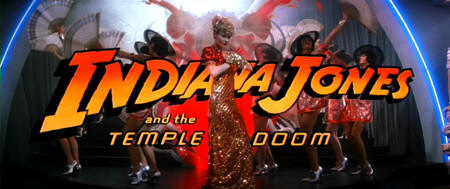
Michael Coate (The Digital Bits): Indiana Jones was the most successful 1980s movie series. Why?
Scott Higgins: Partly, the answer is timing. All three Jones films were released in the 80s vs. only two of the Star Wars franchise.
Eric Lichtenfeld: They weren’t just great movies; they were also great experiences. And each was a great experience in its own way—more or less. And the movie—especially the first and third—lend themselves to both repeat viewings and to all audiences, so you could go back and back with different groups and kinds of the people in your life.
Coate: In what way is Indiana Jones and the Temple of Doom worthy of celebration on its 30th anniversary?
Higgins: The film is a cultural touchstone for a generation, and so it has every right to an anniversary celebration. It is not as innovative or important as Raiders, which set the iconography in place and launched a cycle of lesser films and television shows, but Doom was hugely popular and well marketed – it left a big footprint.
I think that when people return to Doom they will be surprised by how 80s it seems. Raiders made the leap to “timeless icon” pretty quickly. As with Star Wars, it can be difficult to get critical distance from a film like Raiders. Doom isn’t burdened by being a “classic.” Things like the Dan Aykroyd cameo, Kate Capshaw’s haircut, and the “racy” sex jokes are abysmal in a very historically specific way.
Lichtenfeld: I’d like to think that the 30th anniversary of Temple of Doom might lead viewers to revisit and reevaluate the movie. For the most part, it has a reputation it doesn’t deserve and it doesn’t have the reputation that it should. It’s not the masterpiece that Raiders is, but it’s a brave movie. And visually, it’s practically a feast. The cinematography is some of my favorite of all time—not just of the series.
Coate: How are the Indiana Jones movies significant within the action-adventure genre?
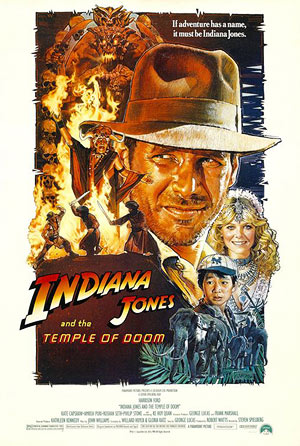 Higgins: It is interesting that you should specify, “action-adventure” rather than “action” as the genre in question. I think our conception of “action-adventure” as a distinct part of the action film tradition comes largely from the Indiana Jones films. Part of what makes them “adventure” is tone – they are throwbacks to Fairbank’s Thief of Bagdad and Flynn’s Adventures of Robin Hood in their broadly drawn subsidiary characters, gleefully obvious comedy, and basic sincerity. These films are rollicking, in a way that adult-oriented action films were not. For better or worse, they created a model for the “family actioner” – movies pitched broadly enough to play cross-generationally, but still crafted around physical problem solving and violent encounters. I guess I’m describing the basic tent pole film – and it has served the industry well (ID4, Avengers) and disappointed terribly (Wild, Wild West, anyone?). The Indiana Jones films didn’t invent this approach, but they carried it off with originality and set a certain standard.
Higgins: It is interesting that you should specify, “action-adventure” rather than “action” as the genre in question. I think our conception of “action-adventure” as a distinct part of the action film tradition comes largely from the Indiana Jones films. Part of what makes them “adventure” is tone – they are throwbacks to Fairbank’s Thief of Bagdad and Flynn’s Adventures of Robin Hood in their broadly drawn subsidiary characters, gleefully obvious comedy, and basic sincerity. These films are rollicking, in a way that adult-oriented action films were not. For better or worse, they created a model for the “family actioner” – movies pitched broadly enough to play cross-generationally, but still crafted around physical problem solving and violent encounters. I guess I’m describing the basic tent pole film – and it has served the industry well (ID4, Avengers) and disappointed terribly (Wild, Wild West, anyone?). The Indiana Jones films didn’t invent this approach, but they carried it off with originality and set a certain standard.
The Indiana Jones films are also important as an American answer to Bond, which is probably the century’s most important action franchise. It is clear that Spielberg and Lucas were emulating Bond, replacing 007’s romantic and exotic Britishness with an equally romantic and exotic nostalgia for America during the good war. Jones substantially cleaned up Bond’s sexuality, but kept his humor and physical cleverness.
If you think of the landmarks of the contemporary action film, Raiders definitely belongs among the fantasy-oriented trend: Star Wars, Superman, Terminator, The Matrix, etc.
Lichtenfeld: Strangely, I’ve always seen them as something apart from the action-adventure genre. At the time the first three were released, they didn’t really look like the rest of the genre. After all, this was still the era of the R-rated action movie that generally didn’t have the scope or craftsmanship of the Indiana Jones movies.
Coate: How do the Indiana Jones movies pay homage to and improve upon the serials that inspired them?
Higgins: The Jones films draw iconography and plot devices from serials and studio-era B adventures more generally. Lucas and Spielberg wanted to recapture the thrills they remembered experiencing in local revival houses when they were growing up, and so these films are steeped in nostalgia for an older cinematic language. Like serials of the 30s-50s, the Indiana Jones films have a sort of crackpot optimism set alongside stunning depictions of depravity. Like serials, the Indiana Jones films can fail to make sense on a very basic level. Like serials, they cover plot holes by simply speeding forward through stunts and chases.
Unlike the serials, the Jones films tend to be unified, coherent, and centered on psychologized characters. In other words, these are feature films, and they are far more tightly plotted than, say, Captain Midnight. Also, unlike most serials, Indiana Jones has the benefit of huge budgets. Spielberg can realize warhorse serial set pieces, like the rope bridge, the crushing room, the abandoned airplane, the ritual sacrifice, or even the horse/car chase and booby-trapped temple at a much, much higher level than the B serials. What those original movies lacked in budget they made up for in cockeyed ingenuity. In serials, Spielberg and Lucas found a storehouse of ideas that they could raid and renew. Incidentally, the Bond franchise first inherited and embellished the serial’s territory, so Indiana Jones is re-appropriating it to American shores.
I think the Indiana Jones films are most successful in emulating the serial’s relentless rhythm of action. Raiders hits a serial-like tempo of stunt-per-minute toward the end of its second act (from the snake-tomb through the truck chase). In Doom, it feels like the filmmakers realized this was their most successful sequence, and so extended that kind of pacing across the entire second half of the film (everything that occurs underground through the climax). That decision made the second half of Doom hard to beat in terms of action and absurd spectacle. Alas, that left too much time in the first half devoted to clumsy exposition and Kate Capshaw.
Lichtenfeld: They’re structured like serials and they capture the spirit of serials, but they have real production value and, even more, craftsmanship. It’s hard to get pulpier than with Temple of Doom and yet John Williams’s score is so rich and complex, it’s practically operatic.
It’s as if these are the movies the serials wanted to be, and in that sense, they’re the fulfillment of—I was going to say “a potential” or “a promise,” but that’s not quite it, because the serials could never really hope to achieve that in their lifetime. People use movies to help them dream of being something else. If movies could dream of being something else, than the serials dreamed of being the Indiana Jones series!
Coate: Can you recall your reaction to the first time you saw Indiana Jones and the Temple of Doom?
Higgins: Disappointment. I didn’t see it twice. In comparison, seeing Raiders for the first time was pure awesome. That film has this momentum that feels like it can go anywhere, and it had just enough horror and sex to keep my 13 year-old self on the edge of my seat. It stuck around all summer, so we kept going back, following it through the runs.
Coate: Was the controversy over Indiana Jones and the Temple of Doom’s violence that led to the formation of the PG-13 MPAA rating justified?
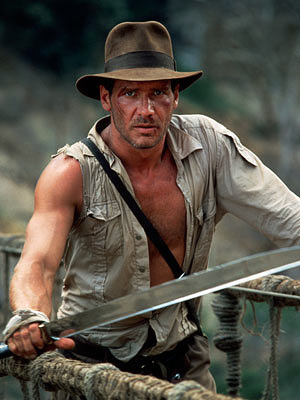 Higgins: Yep. Thing is, Doom’s violence comes straight from the world of serials, but mixed with a Hammer Horror color design and graphic sensibility. Serials could be terribly violent, and they were full of graphically violent ideas if not always images. Dumping people into fire-pits was no big thing. But serials were not generally submitted to the Hays Office for approval, because they weren’t booked into the major’s theaters. They got away with a lot during the 30s and 40s. Hammer slipped through between the end of the Hays Code and the ratings system. It is fitting that, in trying to tap this tradition of intense violence for kiddies, Spielberg raised the MPAA’s hackles. Serials benefitted from staying under the radar.
Higgins: Yep. Thing is, Doom’s violence comes straight from the world of serials, but mixed with a Hammer Horror color design and graphic sensibility. Serials could be terribly violent, and they were full of graphically violent ideas if not always images. Dumping people into fire-pits was no big thing. But serials were not generally submitted to the Hays Office for approval, because they weren’t booked into the major’s theaters. They got away with a lot during the 30s and 40s. Hammer slipped through between the end of the Hays Code and the ratings system. It is fitting that, in trying to tap this tradition of intense violence for kiddies, Spielberg raised the MPAA’s hackles. Serials benefitted from staying under the radar.
Lichtenfeld: Personally, I don’t think the violence was as problematic as the nightmarish imagery. (Of course, you could argue that extracting a still-beating human heart qualifies as both!) Either way, I think the controversy was justified, as was the creation of the PG-13 rating.
The new rating was Hollywood at its most inspired: socially responsible and good for business! It would edge up “younger” movies so that younger audiences would want to see them. As I think Steven Spielberg himself has said, PG-13 is like hot sauce on your movie.
Coate: Where does each Indiana Jones movie rank among the series? Among director Steven Spielberg's body of work?
Higgins: Raiders is clearly the best of the series. Jaws is the best of Spielberg’s genre films, with Raiders just under that.
Lichtenfeld: Ranking the Indy movies is harder for me than it should be. On the one hand, Raiders is clearly a masterpiece that leaves Temple of Doom and Last Crusade duking it out for second place. I’d give the edge to Temple, because it may be much more flawed than Crusade, but it’s also more daring. And it looks and feels like a movie with a capital M. Crusade, on the other hand, feels less ambitious. And while it’s a much more polished machine than Temple, it’s also a little too safe. It’s very enjoyable, but Temple is more sumptuous, and of the sequels, it’s the one I respect most.
On an (even more) subjective level, though, I’ve seen Raiders so many times, and studied it so closely, that if I had to pick one to see on the big screen right now, it would be Temple. In fact, whenever the movies are screened in Los Angeles, it’s Temple that’s the draw for me — and I say that having been the host and moderator for the Academy of Motion Picture Arts and Sciences’ 30th anniversary celebration of Raiders of the Lost Ark!
Coate: Was it an ideal choice to eliminate Marion from Indiana Jones and the Temple of Doom?
Higgins: It still boggles the mind.
Lichtenfeld: Was it ideal to eliminate Marion? I don’t know. Show me the version that has her in it, and I can answer that! But ultimately, I do think it was a good choice. The charm of these movies is that each one is, essentially, a standalone adventure. Fans refer to the first three as “the trilogy,” but it’s not really a trilogy — not in the sense that Star Wars or Back to the Future or Star Trek II-IV are. There’s something nice about each movie starting with an unattached Indy. He could have had one adventure since the last movie or a dozen.
Coate: Was it essential that The Temple of Doom be a prequel?
Higgins: This makes very little sense, actually. For one, wouldn’t an Indy who burned magic stones using an incantation be a lot less skeptical of the whole Ark thingy? For another, blood cults in 1930s India instead of Nazis???
Lichtenfeld: I don’t know if it was essential that Temple be a prequel; I always thought more was made of that than was warranted. But it was useful to make it a sequel in one respect: in this movie, as in Raiders, Indy charts a path from being cynical about the treasures he seeks to having awe for their power. It humbles and humanizes him. Had Temple been a typical sequel, it would have been hard to buy his jadedness after what he had witnessed (or not witnessed, as his eyes were shut!) on the island with the Ark of the Covenant.
Coate: The sidekick, Short Round…what were the pros and cons of the character and performance?
Higgins: Spielberg handles kids especially well, and this is a good example. The kid sidekick is another lift from serials, and it could be precious – but Short Round is neither that precocious nor that much of a punching bag. He works.
Lichtenfeld: The light touch that Short Round brings offsets the darkness of the movie nicely. And his relationship with Indy—somewhere between father-and-son and two brothers—gives the movie a warm underpinning, too.
Coate: The heroine, Willie Scott… what were the pros and cons of the character and performance?
Higgins: Honestly. What was anyone thinking? I’d like to hear someone try to defend this choice. Admittedly, it is a really tough character to pull off – it requires subtlety and timing that Capshaw just doesn’t have. I used to think Willie was just a terrible character and a thankless role. I’ve changed my mind, probably because I’ve seen quite a lot of Jean Arthur, Claudette Colbert, and Barbara Stanwyck since then. Watch The Lady Eve, or It Happened One Night and then tell me that the problem is the role.
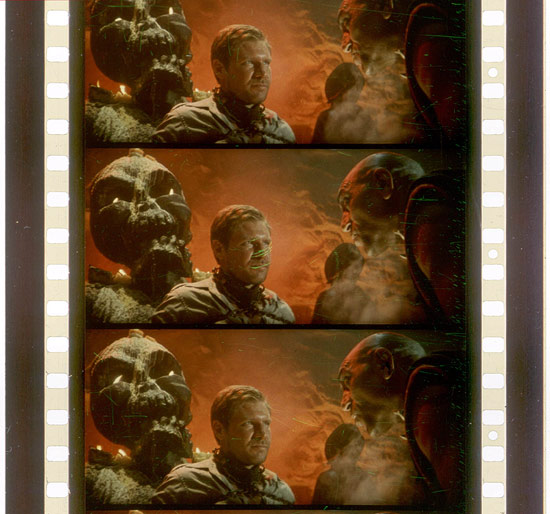
Lichtenfeld: Kate Capshaw’s performance nicely distills the problems with the movie. It’s a little all over the place, not very modulated, not disciplined enough. And it’s too bad because Willie could have been a great foil for Indy. Unlike Marion, she’s obviously very much at home with her femininity and her sex appeal, which made for a different dynamic between Indy and “the love interest.” But where the movie uses her for comic relief, she comes off as shrill. Indy says it himself: “The biggest problem with her is the noise.”
Coate: Given the late 1970s/early 1980s track record of Lucas and Spielberg, was it surprising Indiana Jones and the Temple of Doom was not the top-grossing movie of 1984?
Higgins: Going in to 1984 it seemed like the obvious box office champ, but Ghostbusters and Beverly Hills Cop were funnier and fresher, I guess. By ‘84 Tales of the Gold Monkey had come and gone from the airwaves, and High Road to China and Romancing the Stone had been through the multiplexes. Fatigue. Also, Capshaw.
Lichtenfeld: Given how dark Temple skews—even darker than, say, The Empire Strikes Back — it’s not surprising to me that it wasn’t the top-grossing movie of its year. What’s interesting to me is that even with its darkness, and the controversy surrounding it, an R-rated movie ended up being the top grossing film of the year—and for only one of two times in the entire decade.
Coate: Should there be more Indiana Jones movies?
Higgins: NO.
Lichtenfeld: It’s tempting to say yes. Who wouldn’t want to hear the Raiders March issuing from a movie theater sound system again? But there probably shouldn’t be. Rightly or wrongly, the fourth one is a much maligned movie, but one moment I’ve always liked a lot is when Indy’s friend says, “We seem to have reached the age where life stops giving us things and starts taking them away.” At this point, it may be that the most graceful thing the franchise can do is resist the urge to prove that idea wrong.
Coate: What is the legacy of Indiana Jones and the Temple of Doom?
Lichtenfeld: I think its legacy is the PG-13 rating — which the movie didn’t even have! Unfortunately, I don’t think Temple of Doom is remembered the way it should be. It’s generally seen as the weakest of the (first) three, and I think that’s unfair. It doesn’t help that Spielberg has basically disowned it. I wish he’d stick up for it more! There are a lot of gems to be mined from it—which is a pretty apt metaphor for this movie, when you think about it.
SPECIAL THANKS:
Raymond Caple, Miguel Carrara, Nick DiMaggio, Scott Higgins, Bill Kretzel, Eric Lichtenfeld, Jim Perry, Tim Schafbuch, and a huge thank you to all of the librarians who helped with the research for this project.
SOURCES/REFERENCES:
Numerous newspaper articles, film reviews and theater advertisements; Bantha Tracks, Boxofficemojo, The Hollywood Reporter, Time, Variety, and The Wall Street Journal; the books The Complete Making of Indiana Jones: The Definitive Story Behind All Four Films (Ballantine/Del Rey, 2008) and George Lucas’s Blockbusting: A Decade-by-Decade Survey of Timeless Movies Including Untold Secrets of Their Financial and Cultural Success (George Lucas Books/Harper Collins, 2010); the films Indiana Jones and the Temple of Doom (1984, Lucasfilm Ltd./Paramount Pictures) and The Making of Indiana Jones and the Temple of Doom (1984, Lucasfilm Ltd./Paramount Pictures).
- Michael Coate



